Engineering departments across Detroit operated like underground fight clubs during the early 1970s. Washington’s emissions regulations loomed on the horizon, creating a perfect storm where manufacturers threw caution to the wind. Quarter-mile times weren’t marketing gimmicks—they were religion practiced at every stoplight across America.
Between 1970 and 1971, automakers crammed increasingly ridiculous engines into mid-size frames with the desperation of college students stuffing belongings into too-small apartments. America’s mechanical middle finger to sensibility was about to be raised one final time before the party ended forever.
10. 1970 Dodge Challenger RT 440 Six-Pack: Practical Insanity (Exterior)
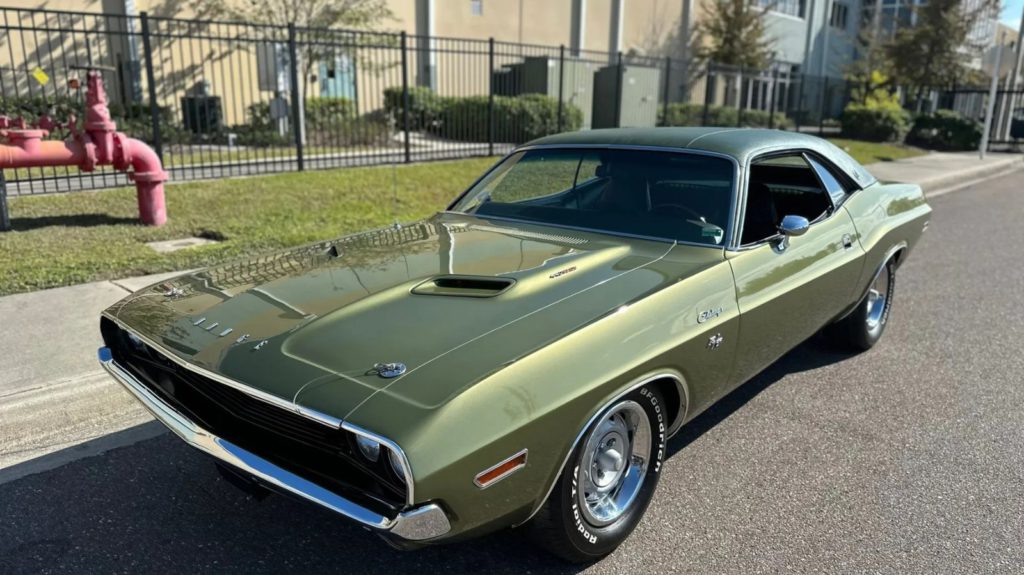
Muscular proportions created one of the era’s most visually striking profiles, valued at $65,000-$150,000 today. Three chrome air cleaners protruded through the functional hood scoop, advertising the unique carburetor setup within. Optional racing stripes and bold color choices enhanced the already dramatic stance. Chrysler’s engineering solution involved mounting three two-barrel carburetors instead of a single four-barrel, providing better fuel distribution and improved throttle response. With 390 horsepower pushing through mid-13-second quarter-miles, the Six-Pack matches today’s 392 Hemi Challenger’s performance despite being five decades older.
Challenger RT 440 Six-Pack (Interior)
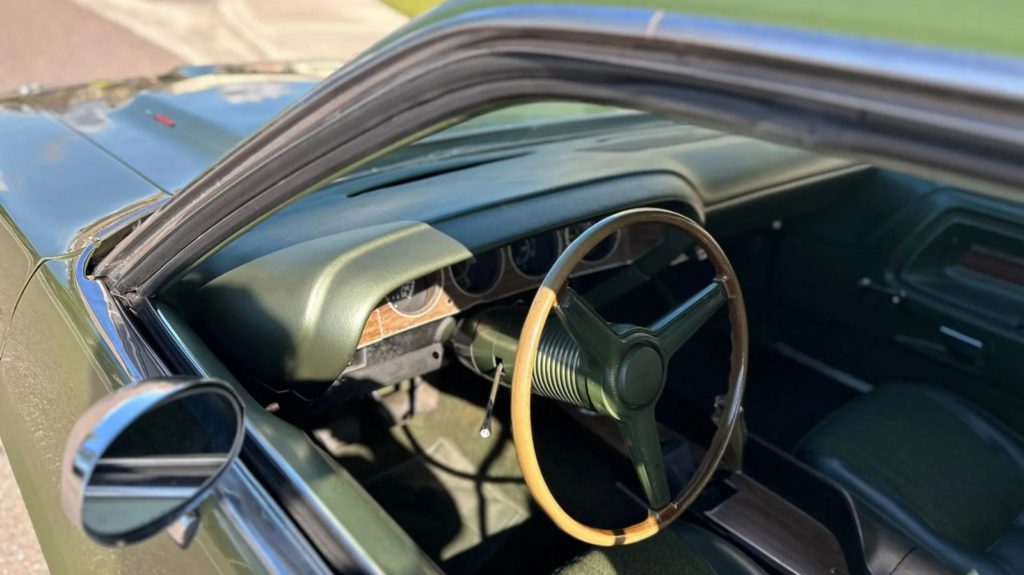
Luxury touches elevated the interior beyond typical muscle car Spartan appointments. High-back bucket seats featured optional leather trim while comprehensive gauge packages kept drivers informed of the potent powertrain’s vital signs. The cabin balanced comfort with functionality, reflecting Dodge’s commitment to creating a muscle car suitable for both weekend racing and daily driving. Optional air conditioning and power accessories made the Challenger a practical choice for enthusiasts who refused to sacrifice comfort for performance.
9. 1970 Chevrolet Chevelle SS454 LS6: The People’s Champion (Exterior)

Perfect proportions created a timeless design that still looks contemporary today, commanding $85,000-$250,000 at auction. Aggressive SS badging, dual racing stripes, and functional cowl induction hood emphasized performance without overwhelming the clean lines. Optional Rally wheels became the perfect complement to the muscular stance. General Motors’ internal horsepower limitations led to creative engineering solutions, with the LS6’s actual output likely exceeding the advertised 450 horsepower. Quarter-mile times of 13.12 seconds at 107 mph match today’s $70,000 Chevrolet Camaro ZL1’s performance despite having 200 fewer horsepower, proving timeless engineering excellence.
Chevrolet Chevelle SS454 LS6 (Interior)
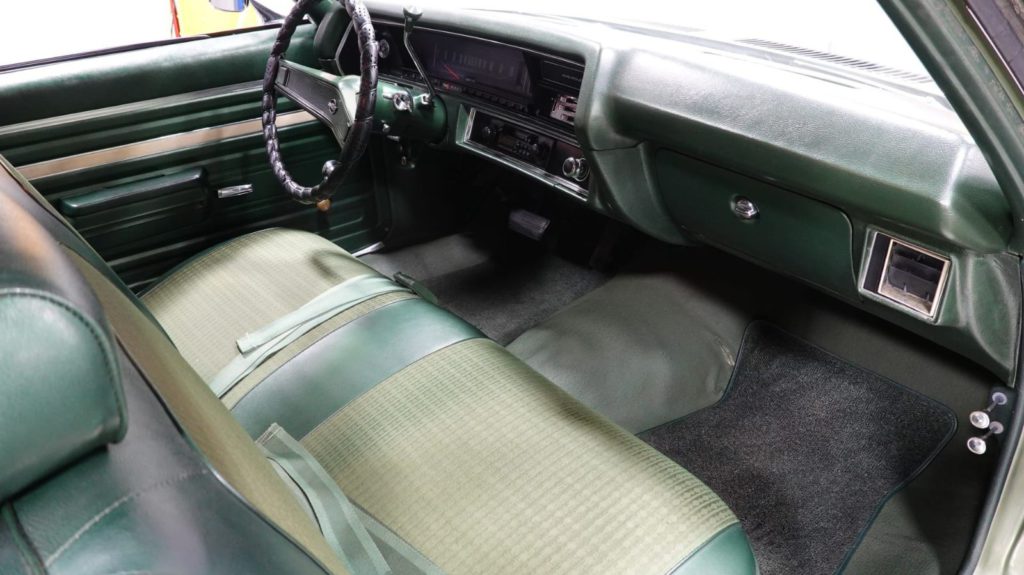
Driver-focused layout prioritized essential controls and information. Available bucket seats with center console created a sporty atmosphere while comprehensive gauge packages included the critical tachometer for managing the monster big-block’s power band. The interior reflected Chevrolet’s democratic approach to performance—serious functionality without pretentious luxury touches. Simple controls and straightforward design emphasized the car’s honest, accessible brutality that made it the muscle car equivalent of comfort food—nothing fancy, just deeply satisfying performance.
8. 1971 Corvette 454 LS6: America’s Last Stand (Exterior)

Fiberglass curves embodied American sports car elegance at its peak, commanding $85,000-$200,000 today. Distinctive side exhausts and aggressive hood bulge hinted at the massive displacement lurking beneath. Optional racing stripes emphasized the car’s performance pedigree without overwhelming sophisticated proportions. Chevrolet knew 1971 marked the end of the high-compression era, pushing the LS6 engine to absolute limits. This created what many consider the most powerful production Corvette engine until the modern supercharged era, running low 14-second quarter-miles matching today’s $60,000 Camaro SS.
Corvette 454 LS6 (Interior)
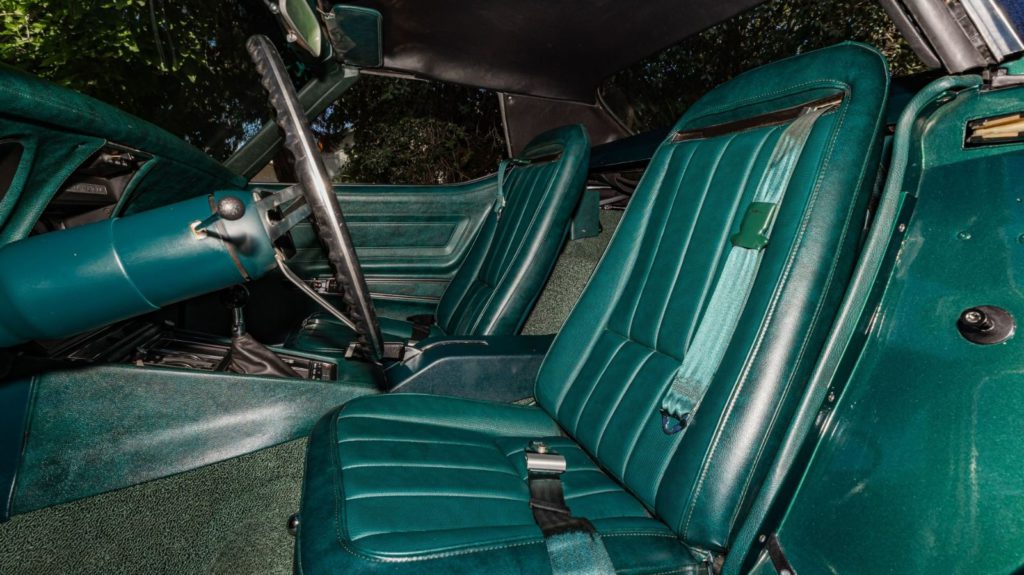
Luxury appointments balanced raw performance throughout the cabin. Leather-appointed bucket seats provided comfort during long-distance touring while comprehensive instrumentation included a 160-mph speedometer that wasn’t mere optimism. The cockpit represented America’s sports car philosophy—sophisticated enough for weekend getaways yet serious enough for drag strip duty. This dual personality made the LS6 Corvette a true grand tourer capable of both civilized cruising and tire-smoking acceleration.
7. 1970 Buick GS455 Stage 1: The Gentleman’s Express (Exterior)

Understated elegance masked devastating performance potential in this $45,000-$95,000 collectible. Subtle Stage 1badges and functional hood scoops provided the only visual hints of the monster lurking beneath. Refined chrome work and sophisticated color options maintained Buick’s upscale image. The conservative division’s engineering team shocked the automotive world by creating one of the era’s quickest muscle cars with 13.38-second quarter-mile times. Zero to sixty in 6 seconds flat matched today’s BMW M340i performance, proving Buick’s engineers weren’t playing around when they unleashed 360 horsepower and 510 lb-ft of torque.
Buick GS455 Stage 1 (Interior)
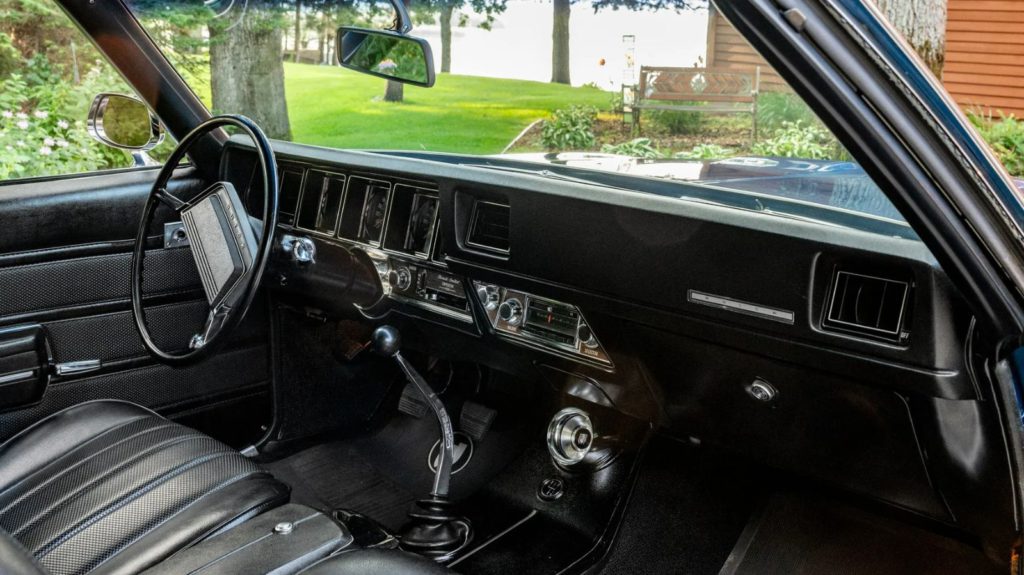
Luxury appointments exceeded expectations for a performance car. Plush bucket seats featured optional vinyl or cloth trim, while complete instrumentation packages included rally gauges monitoring the potent big-block’s operation. The cabin reflected Buick’s commitment to refinement, offering muscle car performance without sacrificing the comfort and sophistication expected from America’s premium division. Woodgrain accents and upscale materials created an environment suitable for both drag strip duty and country club parking lots.
6. 1971 Ford Mustang Boss 351: The Corner Carver (Exterior)
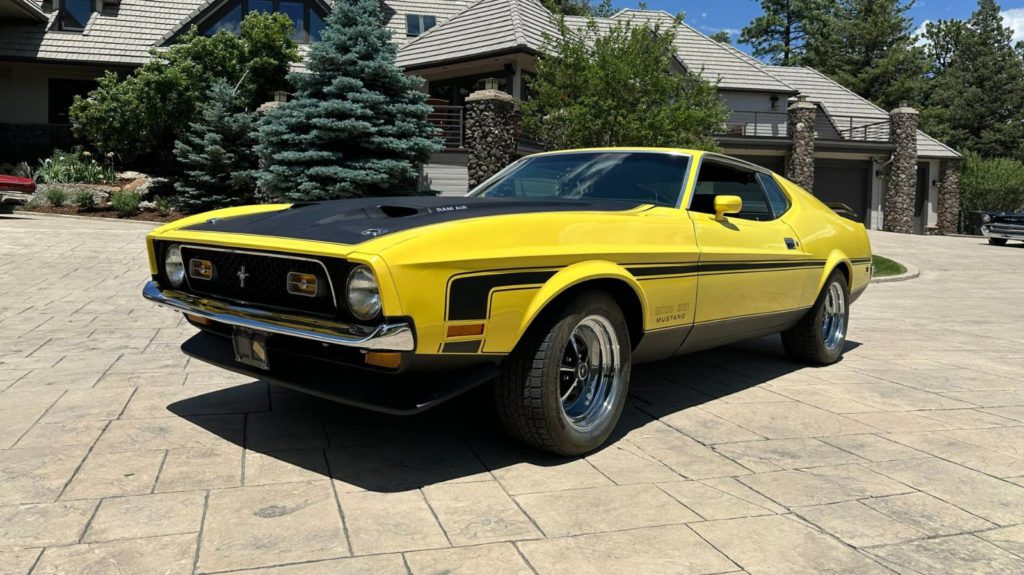
Racing-inspired aesthetics dominated this $55,000-$125,000 collectible’s aggressive appearance. Functional elements included a distinctive hood scoop, rear spoiler, and bold graphics package announcing serious performance intentions. Black horizontal rear window slats became an instant visual signature distinguishing this variant from standard Mustangs. SCCA homologation rules required 1,000 street examples of Ford’s Trans-Am competitor, capturing racing DNA in showroom form with 330 horsepower and high 13-second quarter-mile times matching today’s 450-horsepower Mustang GT.
Ford Mustang Boss 351 (Interior)
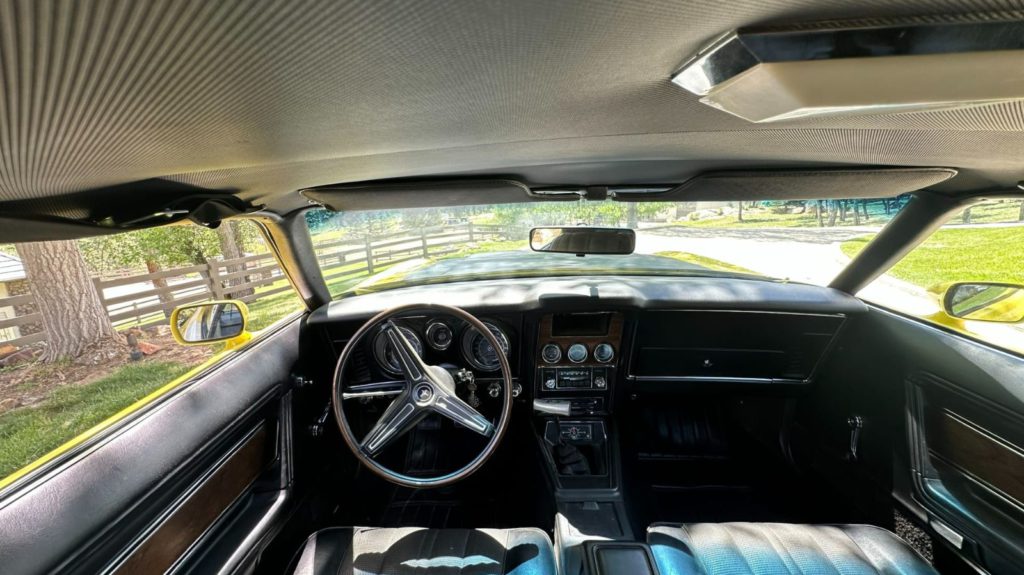
Competition-focused details enhanced the driving experience throughout the cockpit. High-back bucket seats provided better support than typical muscle car offerings, preparing drivers for the Boss 351’s superior handling capabilities. A full instrumentation package kept drivers informed during spirited driving sessions. The interior reflected the car’s dual personality—capable of both straight-line acceleration and actual cornering performance that separated it from contemporaries focused solely on quarter-mile dominance.
5. 1970 Dodge Challenger RT/SE 426 Hemi: The Rare Breed (Exterior)
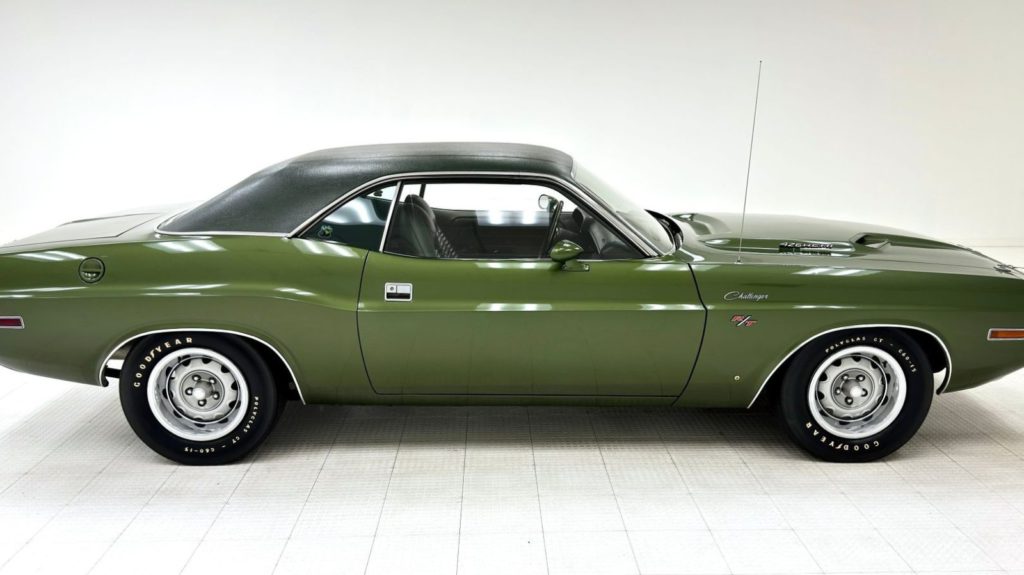
Luxury appointments distinguished the SE package from standard RT models in this $200,000-$450,000 collectible. Additional chrome trim, upgraded wheel covers, and refined badging created upscale appeal. The functional Shaker hood scoop moved with the engine, creating a mesmerizing visual effect during acceleration. Only 287 examples left the factory with the legendary 426 Hemi engine, making this combination rarer than most exotic supercars. Each survivor represents a significant piece of automotive history, with the Hemi’s 425 horsepower and 13.10-second quarter-mile performance matching today’s $85,000 BMW M3 Competition, proving timeless engineering excellence.
Challenger RT/SE 426 Hemi (Interior)
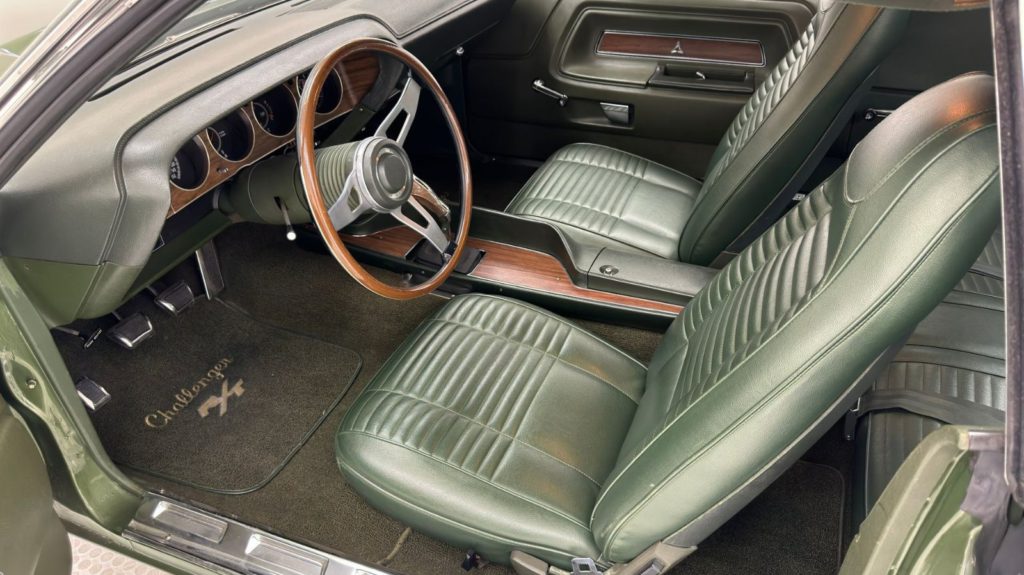
Premium materials elevated the cabin above typical muscle car standards. Leather-trimmed bucket seats, woodgrain accents, and comprehensive instrumentation created country club sophistication while air conditioning and power windows were available options. The RT/SE interior balanced luxury with performance, creating a muscle car that could intimidate at the drag strip and impress at upscale social gatherings. This dual personality made the Hemi Challenger a rare breed—serious performance wrapped in genuine refinement.
4. 1970 Ford Torino Cobra: The Sleeper Assassin (Exterior)
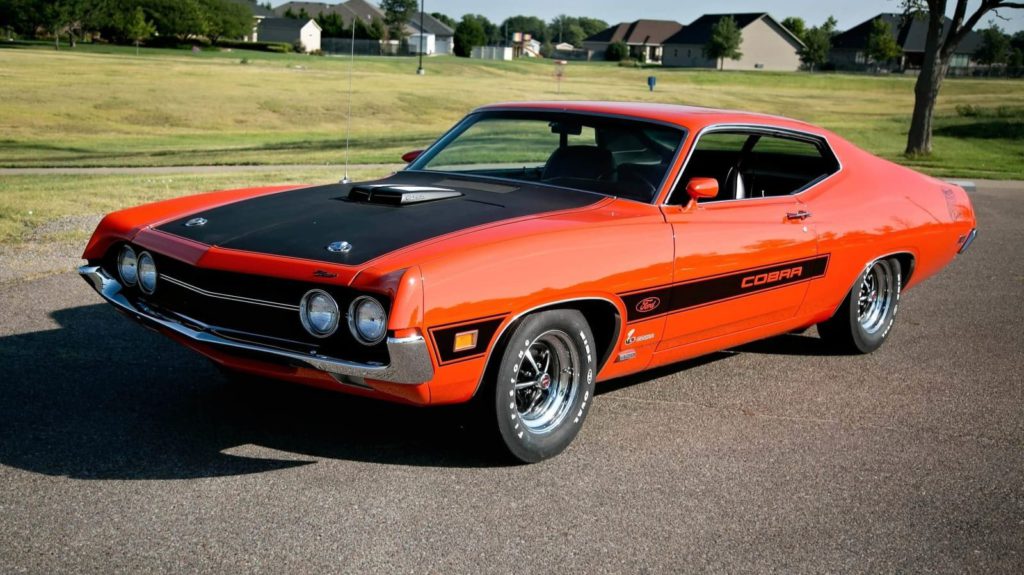
Subtlety defined every line of this understated predator, currently valued at $35,000-$75,000. Clean bodywork avoided flashy chrome treatments that screamed for attention on competitors. Functional hood scoop fed air to the massive 429 cubic inch engine, producing 360 horsepower, paired with minimal “Cobra” badging. Engineers originally designed the platform for NASCAR, creating unexpected street performance with quarter-mile times of 14.0 seconds at 101 mph—matching today’s Dodge Challenger R/T Scat Pack despite having 125 fewer horsepower.
Ford Torino Cobra (Interior)
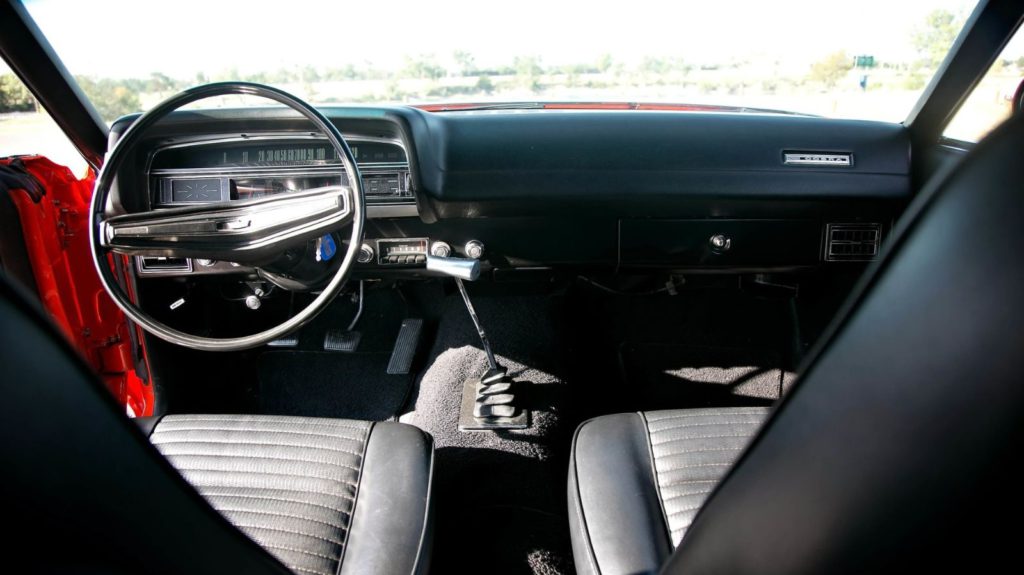
Business-like efficiency characterized the cabin’s approach to performance. Easy-to-read gauges included an essential tachometer for managing the 4-speed manual transmission. Bucket seats prioritized comfort over aggressive bolstering, reflecting an era when straight-line acceleration mattered more than cornering support. The understated interior matched the exterior’s sleeper philosophy, allowing drivers to surprise unsuspecting competitors at stoplights across America.
3. 1970 Plymouth Roadrunner 426 Hemi: The Cartoon With Claws (Exterior)
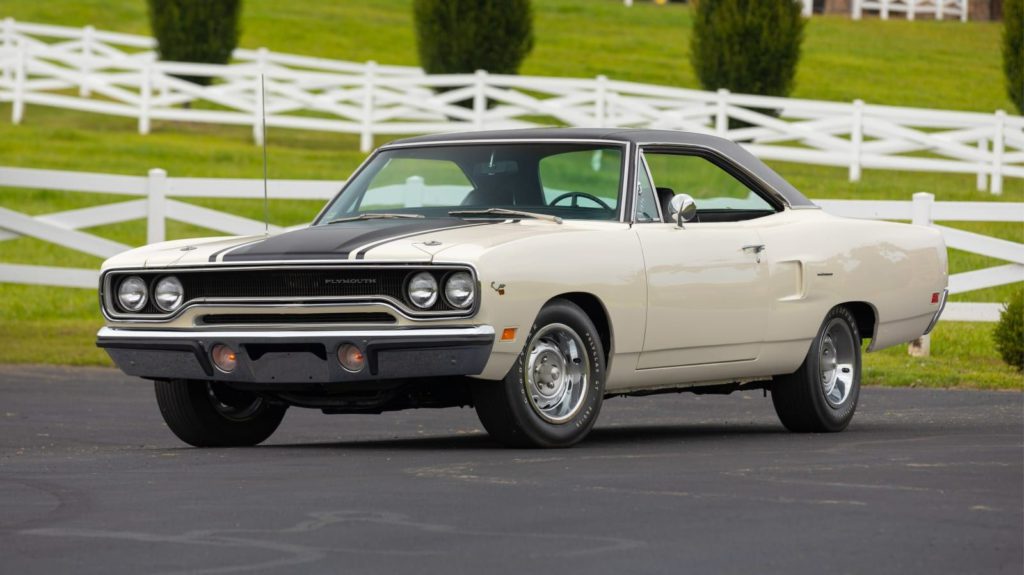
Playful graphics package embraced the Warner Bros. licensing agreement with genuine enthusiasm on this $125,000-$300,000 classic. Bold “Road Runner” decals, cartoon character emblems, and available “beep-beep” horn created a lighthearted atmosphere that belied serious performance capabilities. A functional air grabber hood scoop could be activated from the dashboard for additional drama. Plymouth’s $50,000 annual licensing deal with Warner Bros. created instant brand recognition, attracting younger buyers who might otherwise consider the muscle car scene too serious. Quarter-mile times of 13.34 seconds at 107.5 mph easily embarrass today’s $45,000 Toyota Supras’ 13.9-second performance.
Plymouth Roadrunner 426 Hemi (Interior)
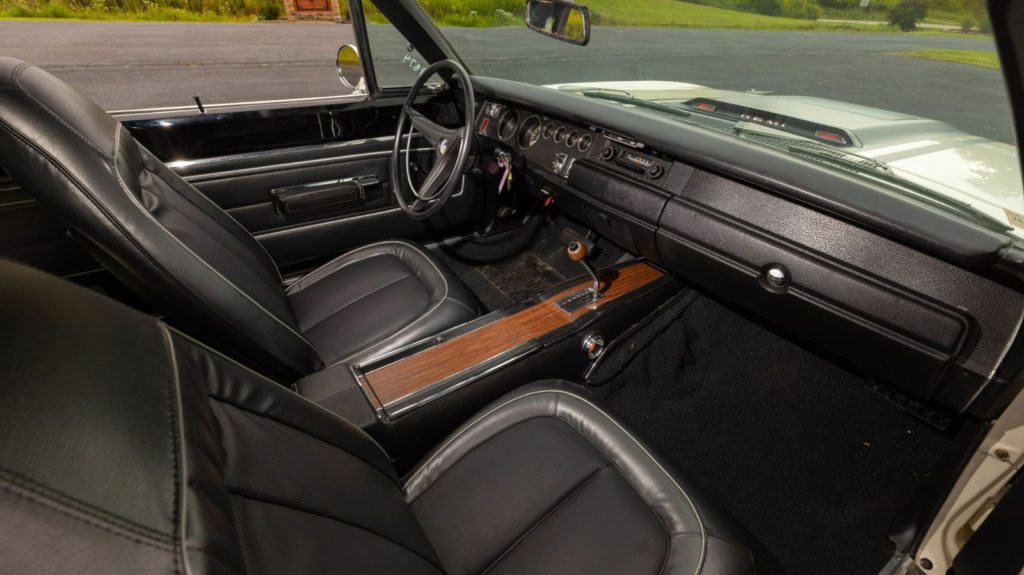
Basic appointments kept costs down while maintaining essential functionality. Simple bench seats and minimal luxury features reflected the car’s budget-performance mission, allowing Plymouth to offer Hemi power at accessible prices. Essential gauges monitored the legendary 426 Hemi engine’s vital signs while straightforward controls emphasized simplicity over sophistication. The no-frills approach perfectly matched the cartoon character’s unpretentious personality, proving that serious performance didn’t require serious attitudes or premium appointments.
2. 1970 Plymouth Hemi Cuda: The Ultimate Expression (Exterior)
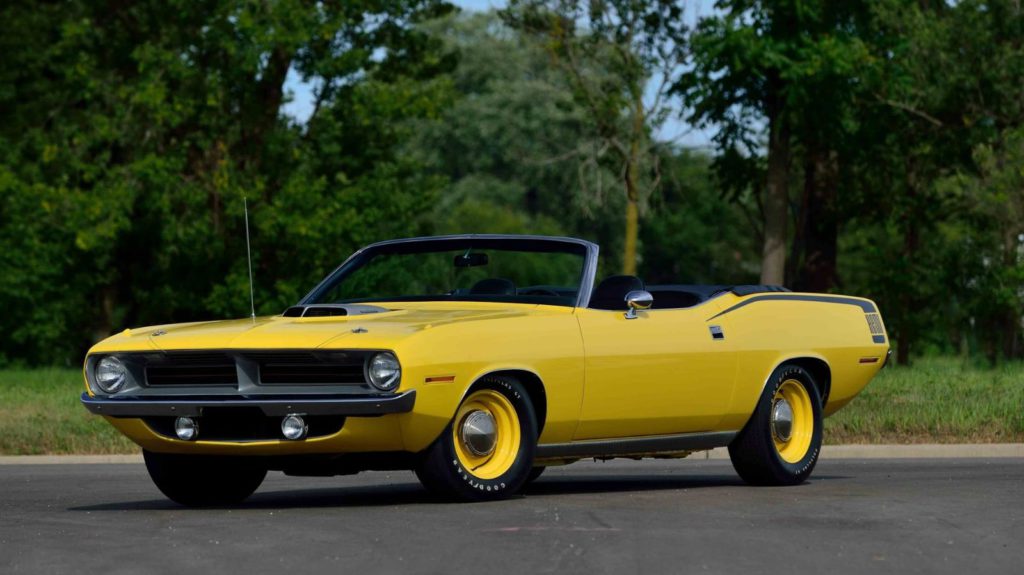
Stunning proportions achieved a perfect balance between aggressive performance and artistic beauty, commanding $1,500,000-$4,500,000 at auction. The distinctive Shaker hood scoop, bold “Cuda” graphics, and available High Impact colors created instant visual drama. Every line seemed sculpted by artists who understood both form and function. Barrett-Jackson’s 2022 sale of a Hemi Cuda convertible for $4.8 million proved these cars transcended mere transportation to become rolling art. With just 652 built, this masterpiece remains rarer than humility on social media, yet today’s $90,000 Dodge Challenger Hellcat produces significantly more power but can’t approach the Hemi Cuda’s cultural impact.
Plymouth Hemi Cuda (Interior)
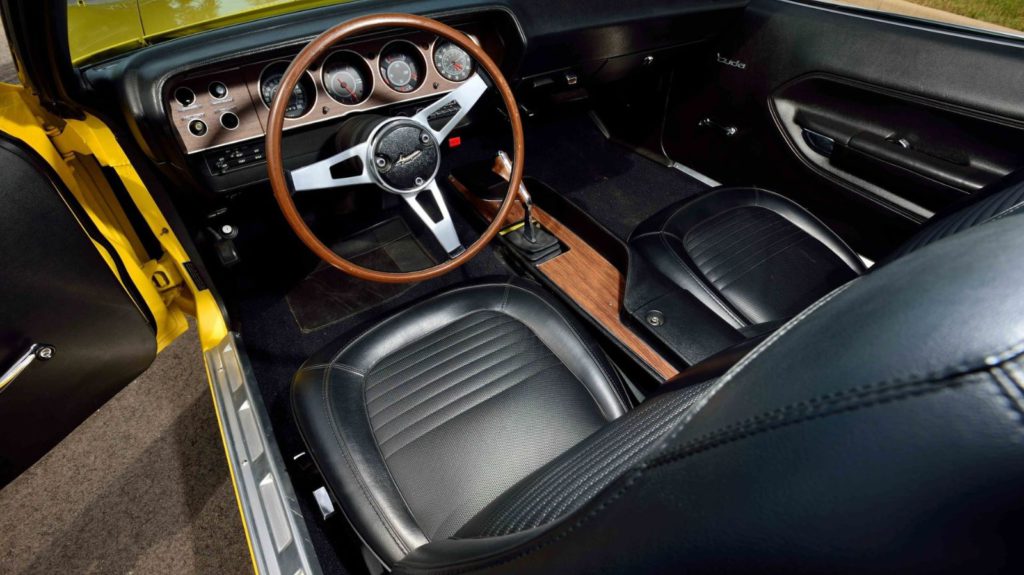
Racing-inspired details emphasized the car’s serious performance intentions. Available bucket seats featured aggressive bolstering for spirited driving, while the pistol-grip shifter became an iconic element that perfectly captured the era’s raw attitude. The interior balanced functionality with style, creating a cockpit worthy of the legendary 426 Hemi’s 425 horsepower and 13.10-second quarter-mile capability. Every detail reinforced the Cuda’s position as the ultimate expression of American muscle car philosophy—pure, uncompromising performance wrapped in stunning design.
1. 1970 Plymouth Superbird: The Road-Going Spaceship (Exterior)
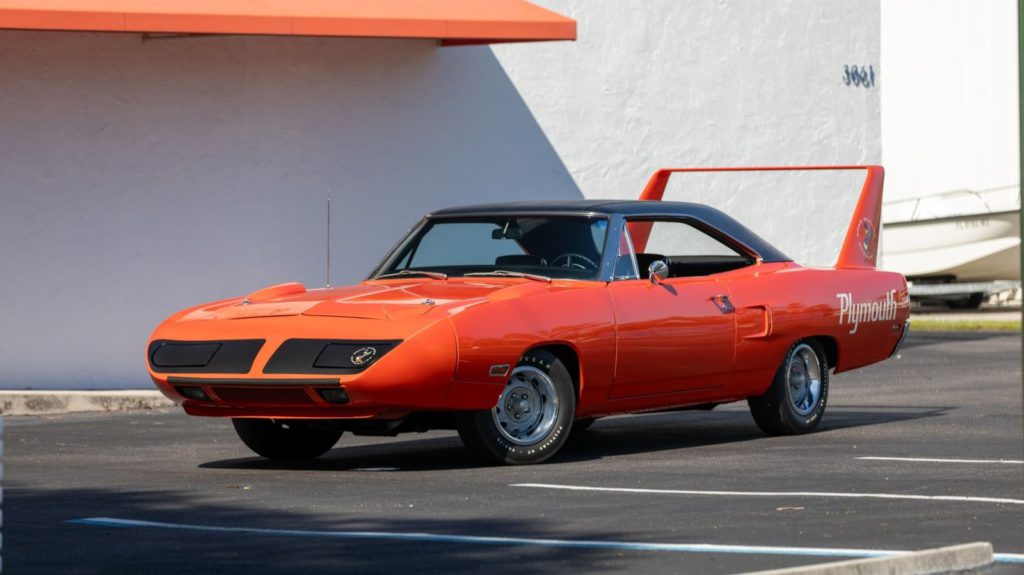
Aerodynamic extremism defined every controversial design element of this $200,000-$500,000 collectible. Engineers extended the nose cone 19 inches beyond standard dimensions, creating a space-age profile that looked alien on American roads. The towering 23-inch rear wing wasn’t merely cosmetic—wind tunnel testing proved its effectiveness at racing speeds. Richard Petty’s defection to Ford prompted Plymouth’s desperate response, with the Superbird’s extreme aerodynamics specifically designed to lure “The King” back to Plymouth’s racing program. Today’s 717-horsepowerDodge Challenger Hellcat can’t match the Superbird’s historical significance or current collector value.
Plymouth Superbird (Interior)
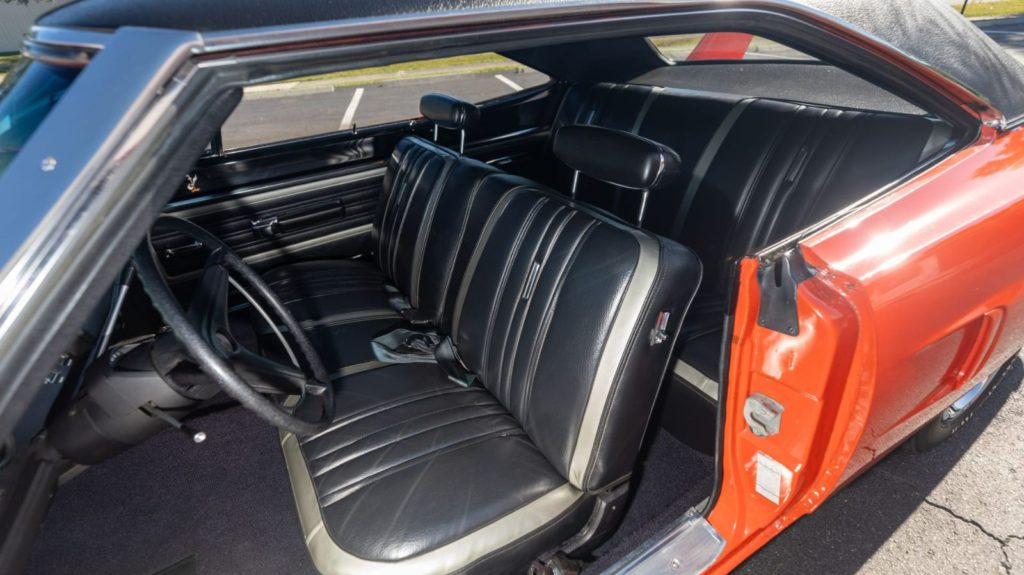
Standard appointments reflected the car’s NASCAR homologation requirements. Basic bucket seats and minimal luxury features kept weight down and costs reasonable for the 1,920 examples required for racing eligibility. The interior prioritized function over form, with essential gauges monitoring the available powertrains ranging from 440 cubic inch V8s to the legendary 426 Hemi. Simple controls and a straightforward layout reflected the car’s racing heritage and single-minded focus on aerodynamic performance over creature comfort.